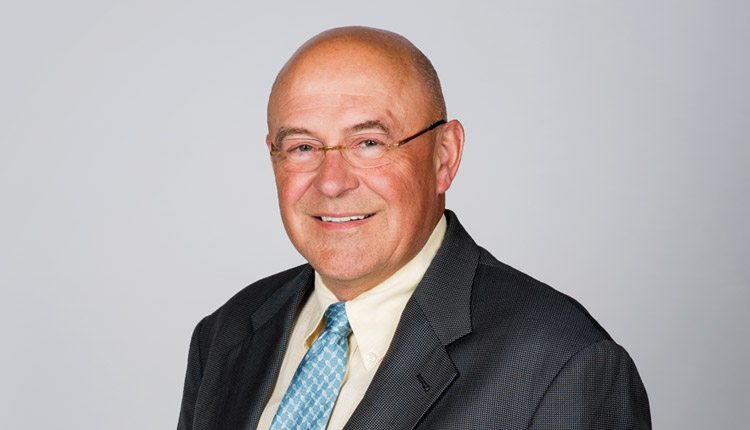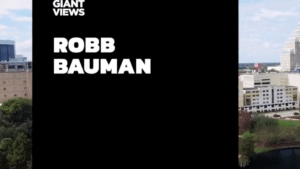Dr. Robert (Robb) Fraley is executive vice president and chief technology officer for Monsanto Company, overseeing Monsanto’s integrated crop and seed agribusiness technology and research with facilities in most every world area. We catch up with him for his views on the world of agriculture and what he’s up to these days.
Seed World: What are you reading now, and why?
Robb Fraley: The Girl in the Spider’s Web, the fourth book of The Girl with the Dragon Tattoo series. I enjoy a good thriller and I like the fact that the story’s main character uses technology to solve problems.
SW: What are your biggest concerns within the industry right now?
RF: It’s a tough economic environment across the industry right now, but the reality is that in agriculture we’re always just a season away from a shortage. While that’s a near-term concern for all, the thing that keeps me up at night is how we will successfully meet the needs of our growing planet over the long term. By 2050 there will be nearly 10 billion people on the planet who will be relying on plant and animal agriculture to feed and clothe them.
We have a lot of work to do before we’ll be ready to meet that demand, and I think the innovation that will get us there will require a few things. Advances in biology and data science are driving change within our research and new opportunities for what we can achieve. But with all things new, a productive and science-based dialogue between the industry, regulators and consumers will be necessary.
Also, the industry is realigning right now, so that companies can invest more in research and development to bring together the solutions that farmers will need in the future. Everyone is upping their game, and hundreds of new companies are entering the space with technologies that will be on the farm in the near future. What is happening in terms of investment in agriculture technology right now is really exciting and bodes well for the whole industry. We all need to evolve, because the challenges are significant. Together, we are absolutely capable of getting to where we need to be — but we must remain focused on the greater goal as we approach incremental milestones in the coming years.
SW: What are your top three goals for the year ahead?
RF: 1. My top priority every year is continuing to drive new innovations for agriculture within our research and development pipeline. Having been part of plant biotechnology in the early days and seeing all of the progress happening today in computational biology, robotics, data science, gene editing, etc., I’m excited by what we’re poised to achieve next. New technologies that improve products for farmers must be scalable globally and beneficial for farmers who manage both tens of acres and thousands of acres. They must enable farmers to farm more precisely, enhance their decision making and improve sustainability on the farm. Climate is a great example of improving on-farm decision making. Technologies are making it possible to digitize the physical world by measuring it and representing it in digital form as data. That data makes it possible to better predict the future, giving us the ability to make smarter decisions and drive better outcomes in the real world.
2. We are also working hard to close our deal with Bayer. We are working with growers, regulators and policymakers to show how this deal is good for farmers and society. It will enhance innovation and choice for famers, bringing whole new levels of investment to research and development and more solutions to the farm, faster than ever. Monsanto will continue to be an engine for accelerated innovation when it combines with Bayer. The new company will develop new and enhanced solutions across seed, chemistry, and digital agriculture as well as deliver these innovations at a faster rate than ever. Ultimately, the combination will deliver better, more targeted solutions for growers that can more effectively address the challenges they are facing. It will also provide them with greater choice in products that can improve their productivity and profitability, including from the new combined company, from an increasing number of other companies with their own technologies and from those that broadly license innovations across the industry.
3. Lastly, I’ll continue my commitment to engage with the public and industry stakeholders around agriculture innovation. There has never been a more exciting time to be in agriculture. However, the state of public discourse around the role of science and ag and our everyday lives continues to be called in to question, so transparent dialogue about modern agriculture has never been more important. There’s a role for everyone involved in the industry to play to ensure that science is allowed continue advancing to meet the demands of our population while helping to mitigate the challenges our planet faces.
SW: What is your number one hobby, and how does it help you in your work?
RF: I’m an avid gardener and enjoy many outdoor hobbies — particularly snow skiing. Spending time in nature is a great reminder of what we’re working so hard to achieve at Monsanto. Preserving biodiversity and developing technologies that allow us to farm more sustainably are daily focal points for our researchers. Doing more on each farm acre while using fewer inputs will help us to meet growing needs while preserving natural acres for our children and grandchildren to enjoy the way that we do today.
SW: How do you deal with stress?
RF: I remain focused on a healthy work/life balance; as passionate as I am about my work, spending time with my family is of utmost importance to me. Also, I have a great team of people surrounding me at Monsanto, and they make the hard work worthwhile.
SW: The Bayer/Monsanto deal: What’s the biggest misconception you think needs to be cleared up?
RF: Change creates uncertainty and concern, particularly when companies combine. We need to help farmers understand how this combination of Bayer and Monsanto will actually enhance choice, spur competition, lower costs and bring whole new solutions to their farms faster. I firmly believe that growers are best served when companies up their game and invest more. That’s what we intend to do.
SW: You travel a lot in your work. How do you deal with jet lag?
RF: I make sure to acclimate to the local time zone wherever I am as best I can, and as quickly as I can. Also, lots of coffee in the morning and a bourbon or two in the evening helps — you just want to make sure you don’t get those two mixed up.
SW: What do you want others to know about the seed industry?
RF: Two things. First, the agriculture industry is of paramount importance for our future as a society. Both because of the importance of enhancing the crops that are essential to our global food security, and also because agriculture is uniquely positioned to positively impact our environment through the preservation of precious natural resources and biodiversity, and through modernizing on-farm practices to reduce things like carbon emissions and pesticide use.
Second, now is an incredibly exciting time to be a part of the industry. We are going through a revolution, with hundreds of new companies bringing technologies from other industries, and applying them in agriculture — robotics, machine learning, data analytics and driverless vehicles are all finding their way to the farm.
It is also a time when collaboration is incredibly important. If you think about the challenges that we face in terms of sustainably producing more food, but also to protect our world, no one company will be able to do it alone. It’s just not possible, and we will need the whole ag ecosystem to really step up. But when I see the exciting work that our people at Monsanto and other companies are doing, including the really exciting technologies that are coming out of the large and growing number of AgTech start-ups, I wish I could go back and be a young researcher all over again.
Now is an incredible time for young people pursuing STEM careers to take a look at opportunities in agriculture. The advances we’ve made in the biological sciences over the last 20 years combined with the advent of data science is about to reinvent our industry once again — and the time to get onboard is now.












